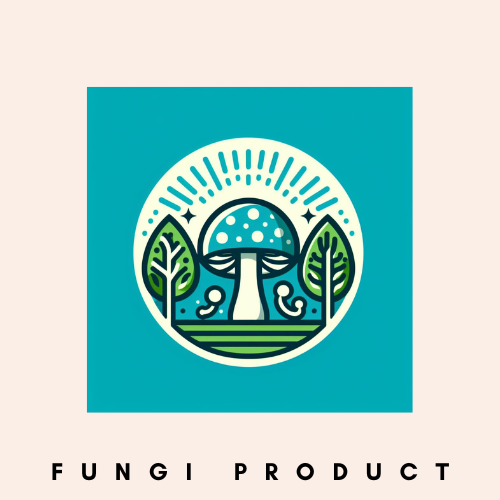I’m going to introduce you to a game-changer in the world of sustainable construction: mycelium.
This isn’t just your average eco-friendly material, it’s a living organism that’s part of the fungi family. When it comes to building materials, the qualities you’re usually looking for include strength, durability, and affordability.
Mycelium checks all these boxes and brings an extra benefit to the table :
it’s incredibly sustainable.
You’re going to find out about the incredible potential of mycelium. It’s a natural network of fungal threads that, when dried, becomes surprisingly sturdy and lightweight. This magic ingredient can be grown into virtually any shape, reducing waste and energy consumption. Mycelium thrives on agricultural byproducts, which means it doesn’t compete for food resources and gives new life to what would otherwise be waste.
Most notably, mycelium’s impact on sustainability is monumental. It doesn’t require the high-energy kiln-firing process of traditional clay bricks, significantly reducing carbon emissions.
After the mycelium is grown into molds and dried, it is strong and resilient.
What’s more, mycelium materials are biodegradable, which means they can be composted at the end of their life cycle, closing the loop on their environmental footprint.
This overview sets the stage for the inspiring breakthroughs already taking root in the construction industry. Next, I’ll walk you through some of the most exciting applications of mycelium that are not just concepts, but functioning marvels.
Stay tuned, and prepare to be amazed by the ingenuity at play in places like
the Crowning Pavilion in Eindhoven and the Hy-Fi Project in New York.
These real-world applications are just the beginning for a material that’s destined to shape
our built environment in an eco-conscious way.
We will walk you through the project in future bolgs … stay tuned with us.
Fungi-Based Innovations
Real-World Applications of Mycelium in Construction
I’m going to take you on a tour of some groundbreaking structures that aren’t just marvels of design, but also pioneers in material innovation. Take the Crowning Pavilion in Eindhoven,
The Netherlands, for example. This edifice isn’t built from your run-of-the-mill construction materials, it stands as a testament to the versatility and strength of mycelium-based bricks.
You’re going to find out about the Hy-Fi Project in New York as well.
What’s fascinating about this structure is its utilization of mycelium for both crafting bricks and insulation materials. This project drew significant attention for its eco-friendly approach and its success in integrating living organisms into the built environment.
In my opinion, the nitty-gritty of how fungi bricks and insulation are produced is just as important as the finished products. The process involves guiding the growth of mycelium around substrates like agricultural waste, forming a solid yet lightweight material. This organic cycle from growth to construction site is a brilliant display of sustainable practice.
Don’t worry too much about the complexity behind it all, though. The real takeaway is that architects and builders are embracing these sustainable materials.
Feedback suggests fascination and optimism, indicating a significant shift toward eco-conscious building practices.
That’s the strategy I like to leverage—combining practicality with sustainability.
Building the Future
Why Mycelium Holds the Key to Sustainable Architecture
My guess is that you’re starting to see how mycelium isn’t just a scientific curiosity,
it’s a game-changer for the construction industry.
This goes beyond the Crowning Pavilion or the Hy-Fi Project.
What we’re talking about here is the potential for a widespread impact across cities and potentially the world.
Your home, the schools in your community, the offices where you work – imagine them incorporating mycelium. Traditional construction materials often come with a heavy environmental cost, from greenhouse gas emissions to the depletion of natural resources. Mycelium, on the other hand, offers a breath of fresh air to these concerns. It provides a much-needed alternative that’s not only sustainable but also highly efficient in terms of energy use and waste reduction.
The beauty of mycelium-based construction isn’t just about what it is today, but what it could evolve into tomorrow. Researchers and pioneers in the construction sector are only scratching the surface. As mycelium technology matures and production scales up, we’re going to see costs decrease and accessibility soar.
There’s a lot at stake here, but also a lot to be excited about. From a practical standpoint, it’s not just about the environmental benefits. It’s also cost-effective, adaptable, and could lead to new design possibilities that we’ve yet to imagine. Urban designs of the future might soon be defined not by the steel and concrete we’ve grown accustomed to, but by the natural, living materials that mycelium represents.
In conclusion, we’re on the brink of a construction revolution.
Mycelium as a building material is not just an option. It’s a necessity if we aim to create sustainable, cost-effective, and aesthetically unique living spaces.
The trailblazers who are investing in these materials today are the ones setting the stage for a more responsible and innovative tomorrow.
And that’s not just exciting, it’s essential for our planet’s future !
